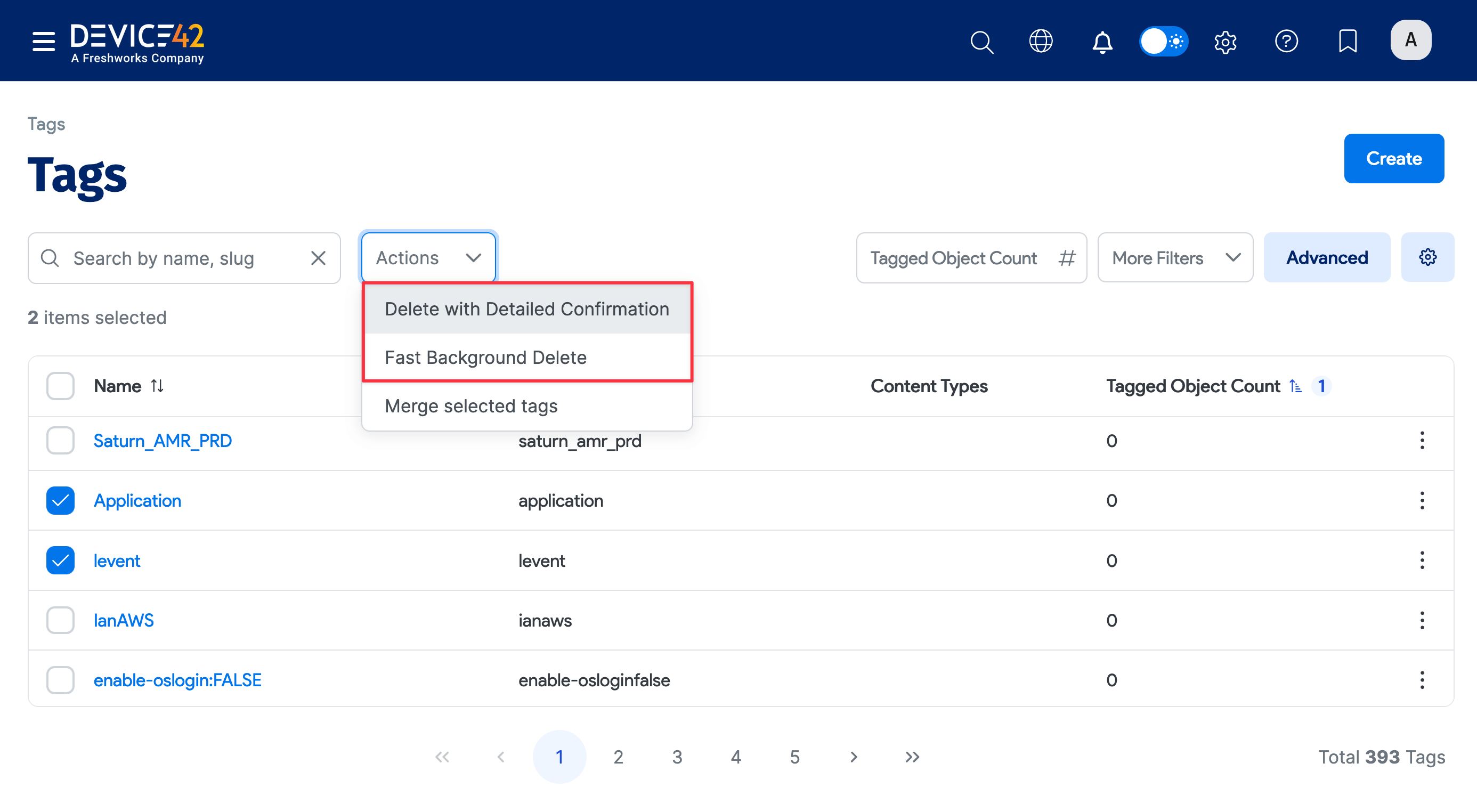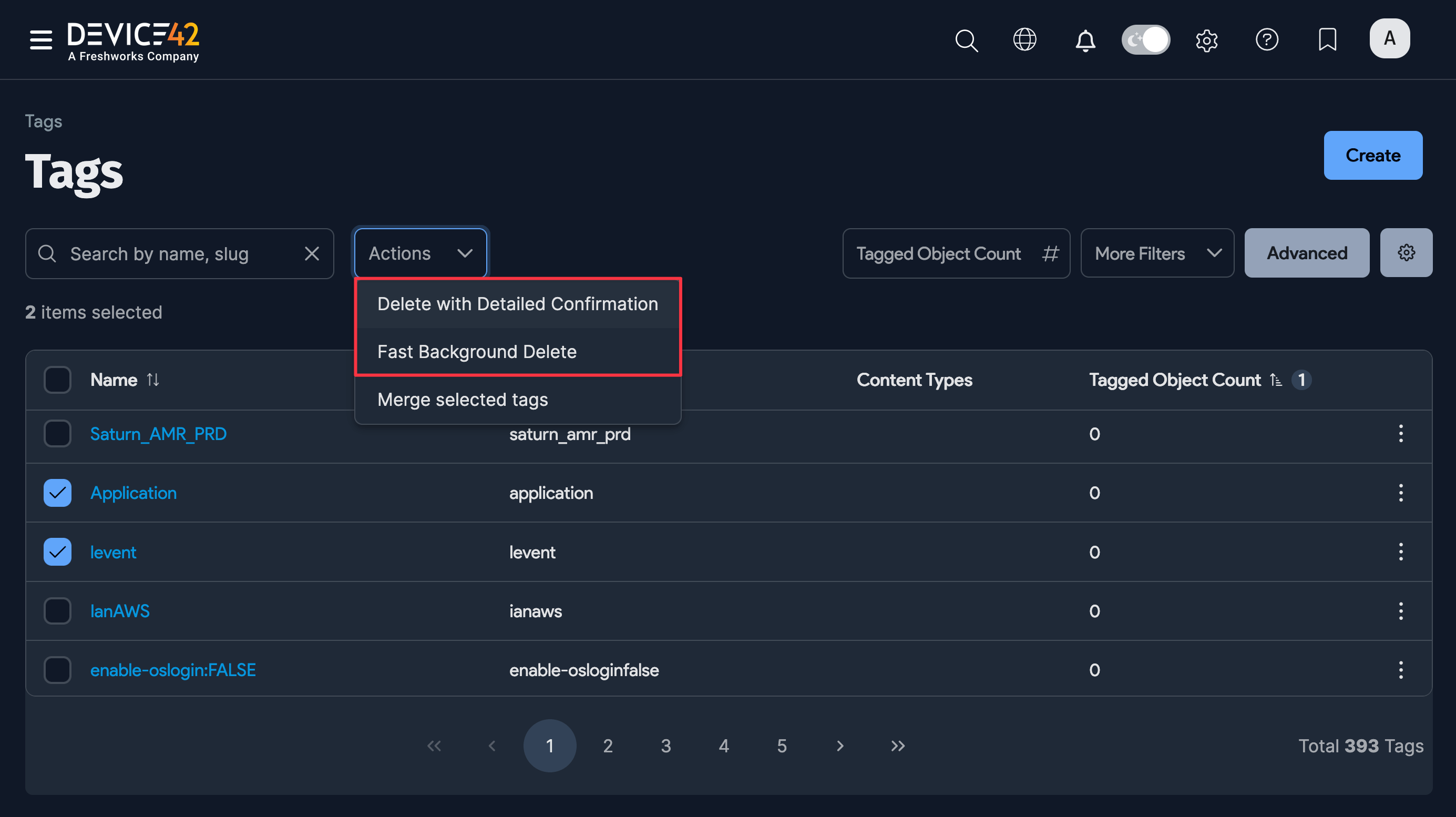Tags
Tags are useful for filtering and grouping objects. For example, you could define a "Project X" tag and associate that tag with all the devices, IP addresses, and other items associated with Project X.
Most objects in Device42 can be tagged, and most reports can be filtered according to tags.
Navigate to the Tags list page under Infrastructure > Organization > Tags to view, edit, and create tags.
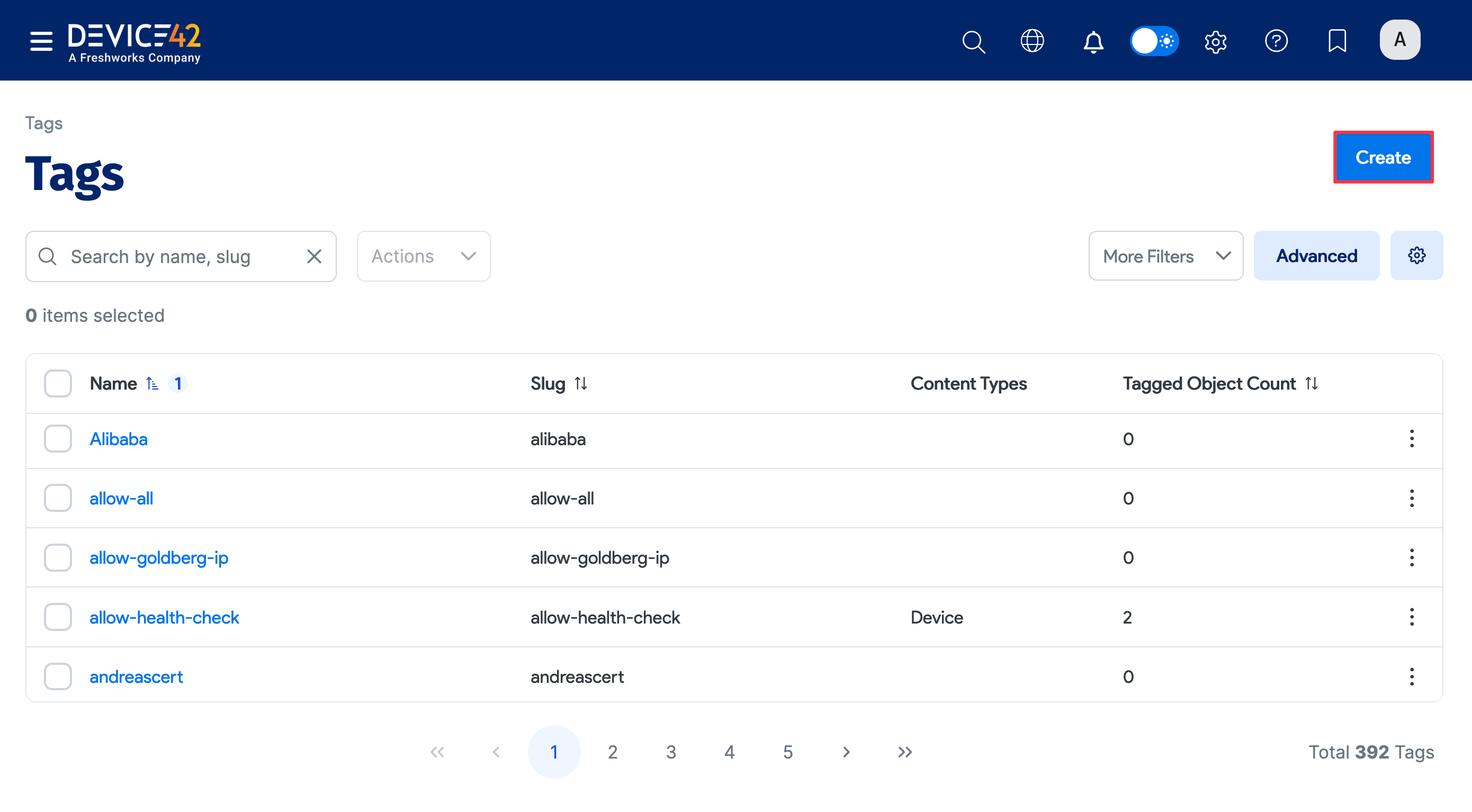
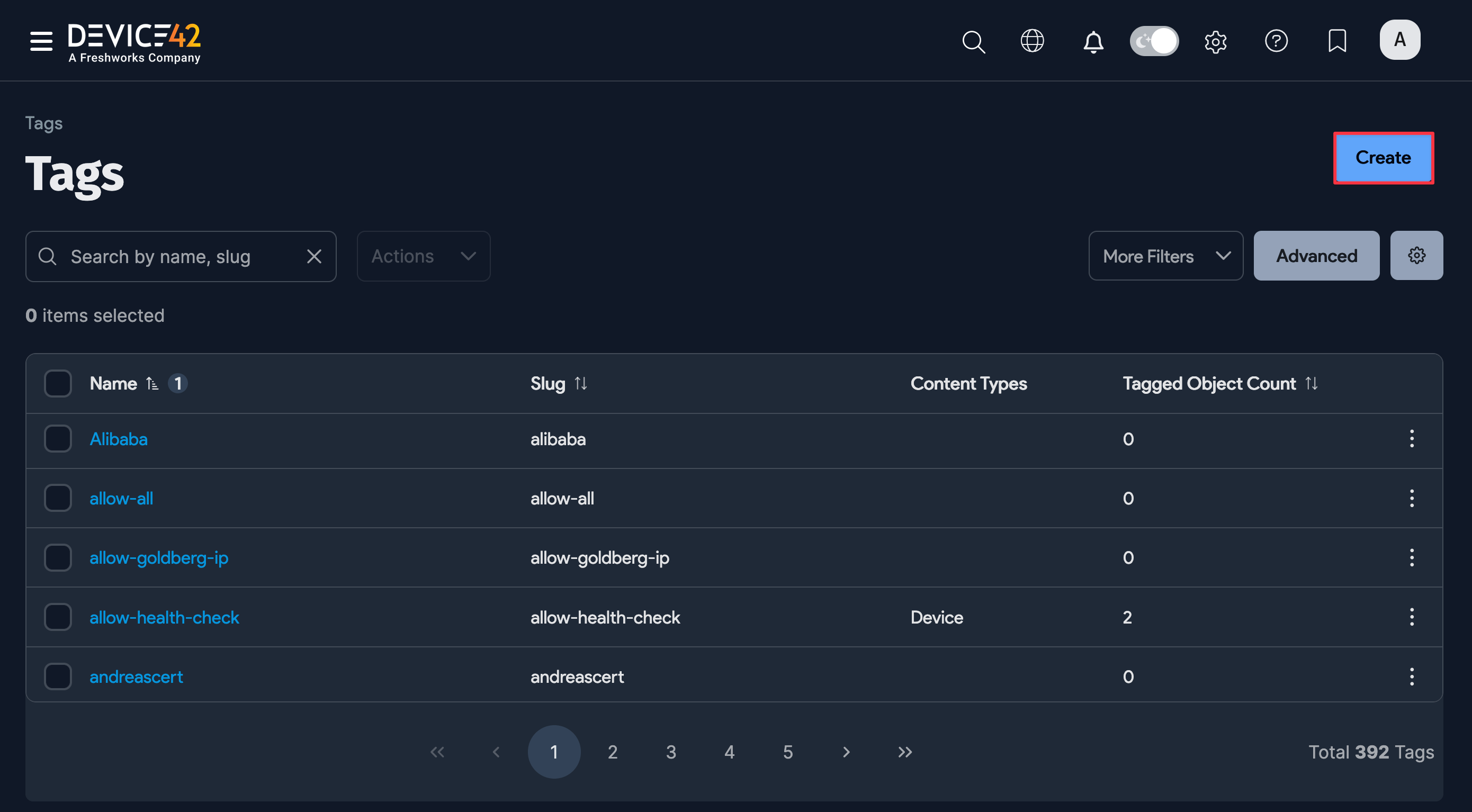
Create Tags
Click the Create button on the Tags list page. You can also create tags using the Tags field on discovery job configuration pages.
Tag names can contain spaces. The Slug is a unique resource identifier for each tag and is automatically filled in.
You can also create new tags directly from an object or an autodiscovery job configuration page, under the Tags field.
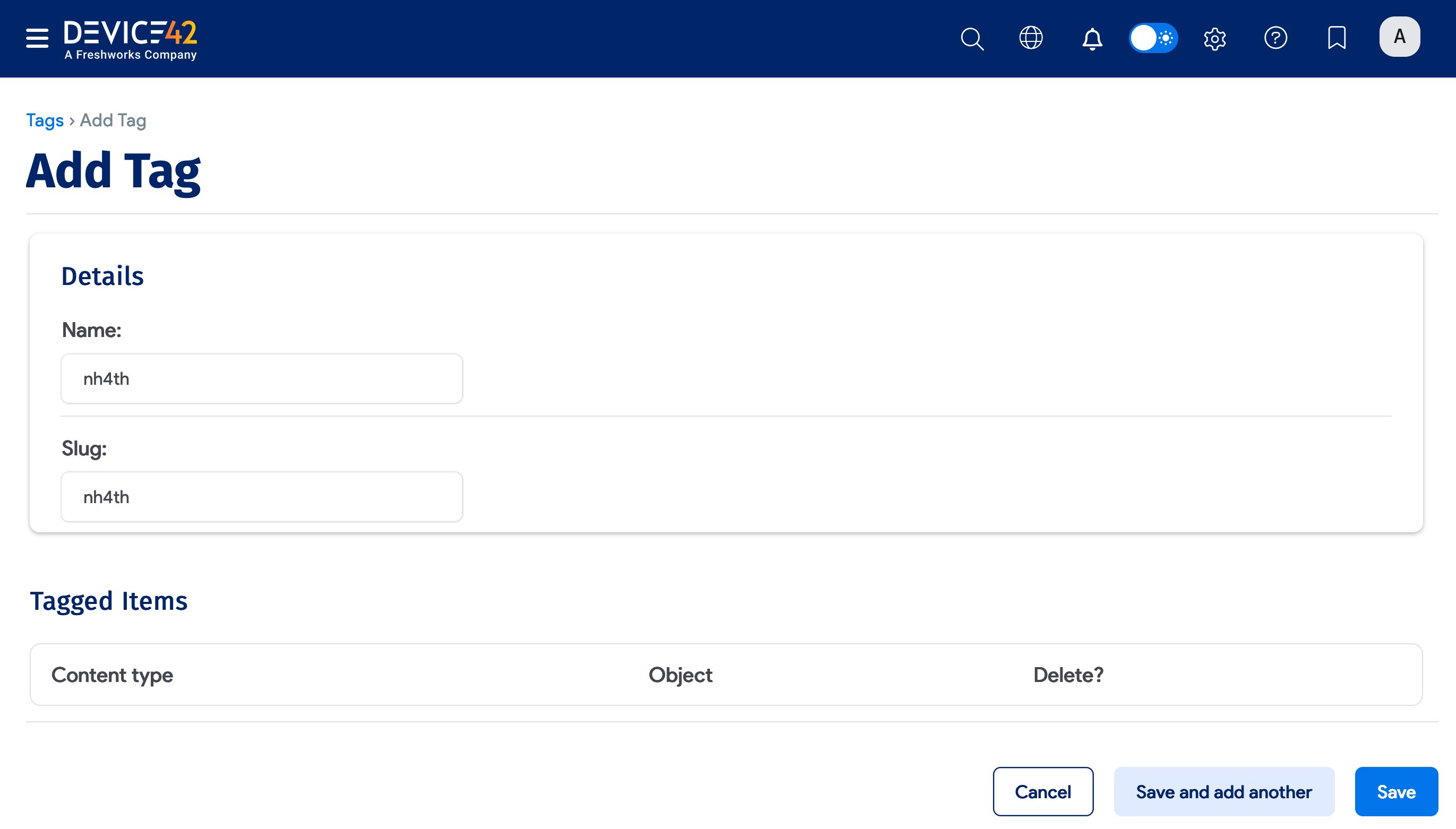
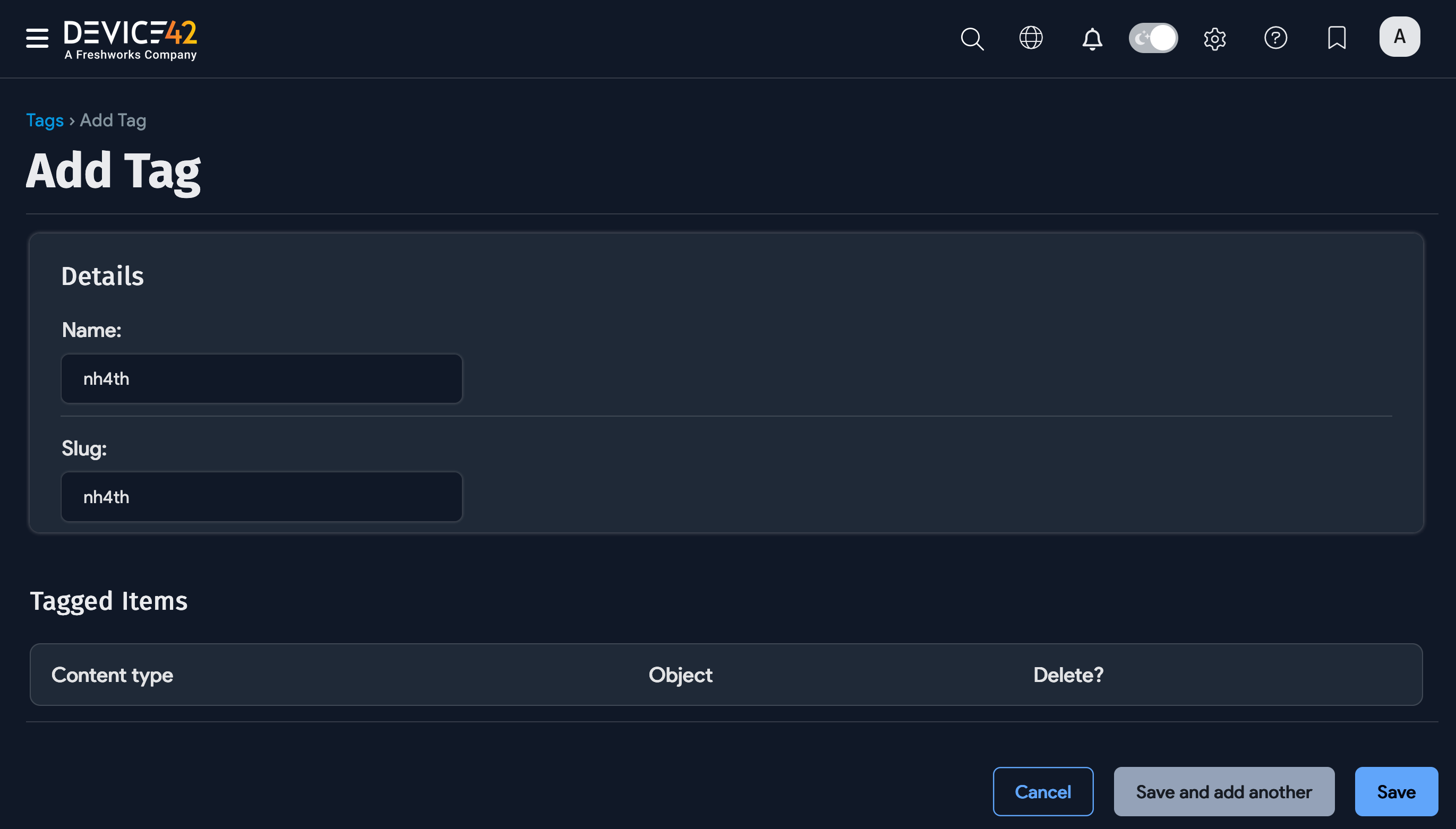
View and Edit Tags
On the Tags list page, you can click on a tag name to view the objects with that tag. To remove an association, click Edit, check the Delete? checkbox, and click Save.

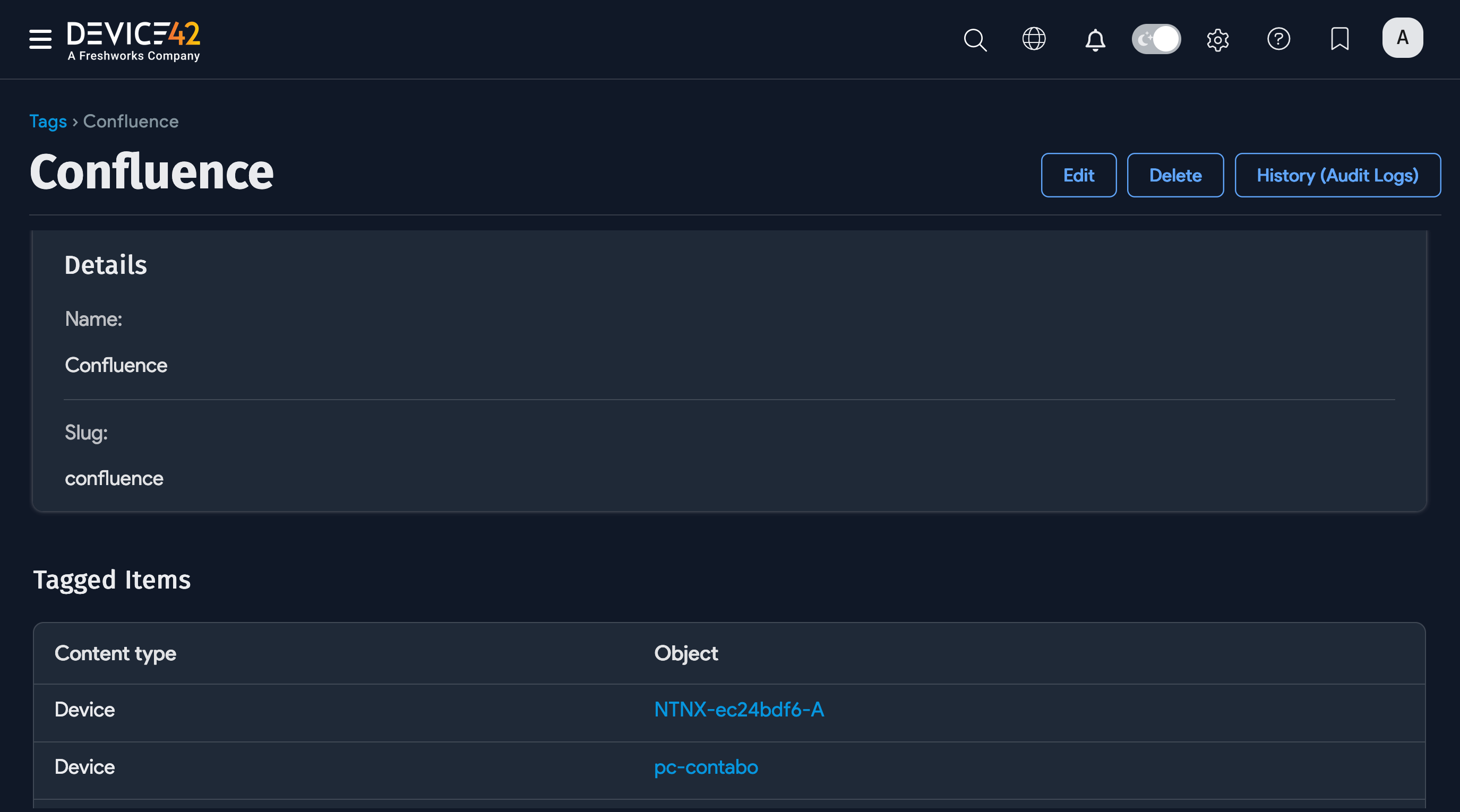
Tagging Objects
Add a tag to a device by filling in the Tag field when creating or editing a device. You also specify tags for discovered objects when configuring an autodiscovery job.
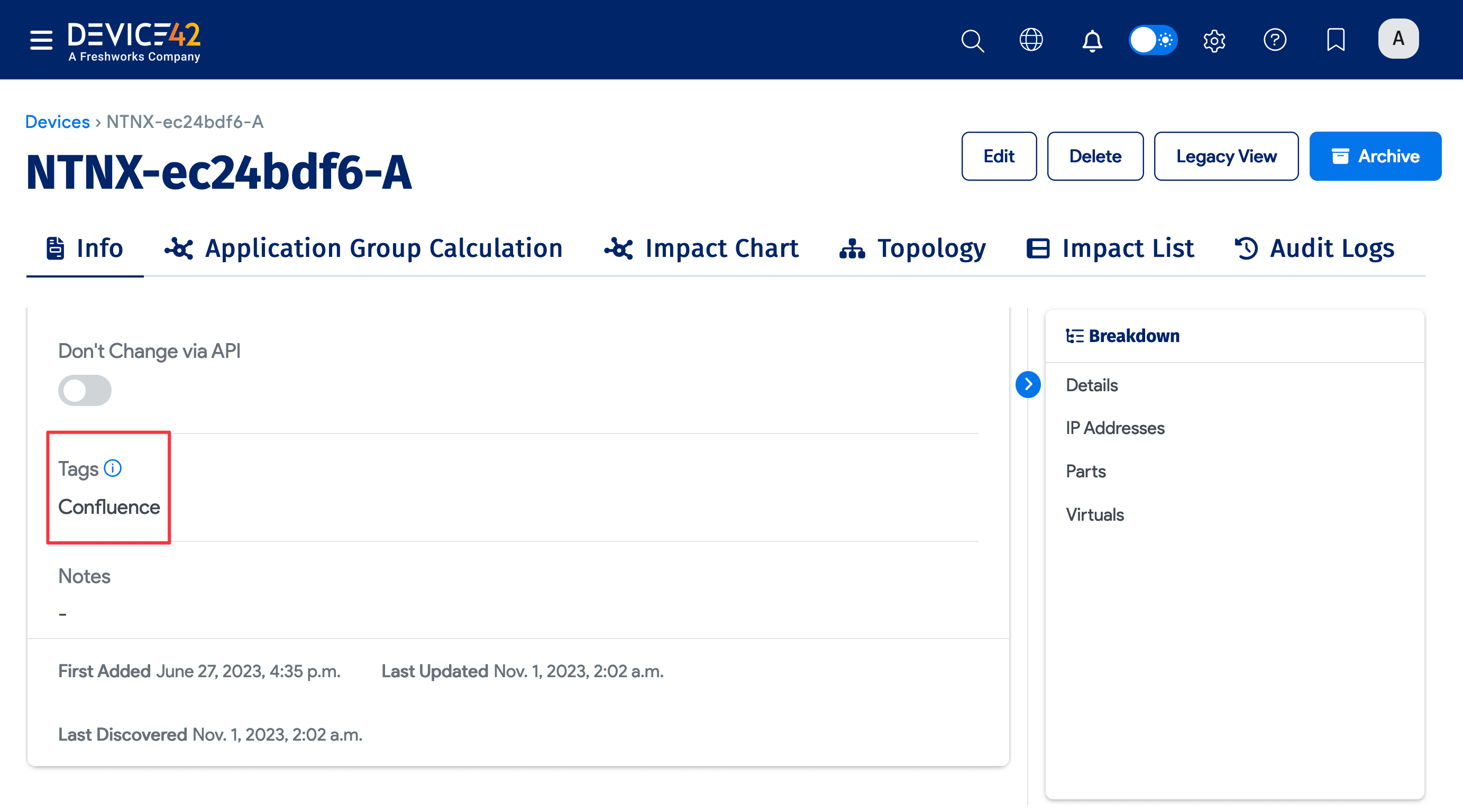
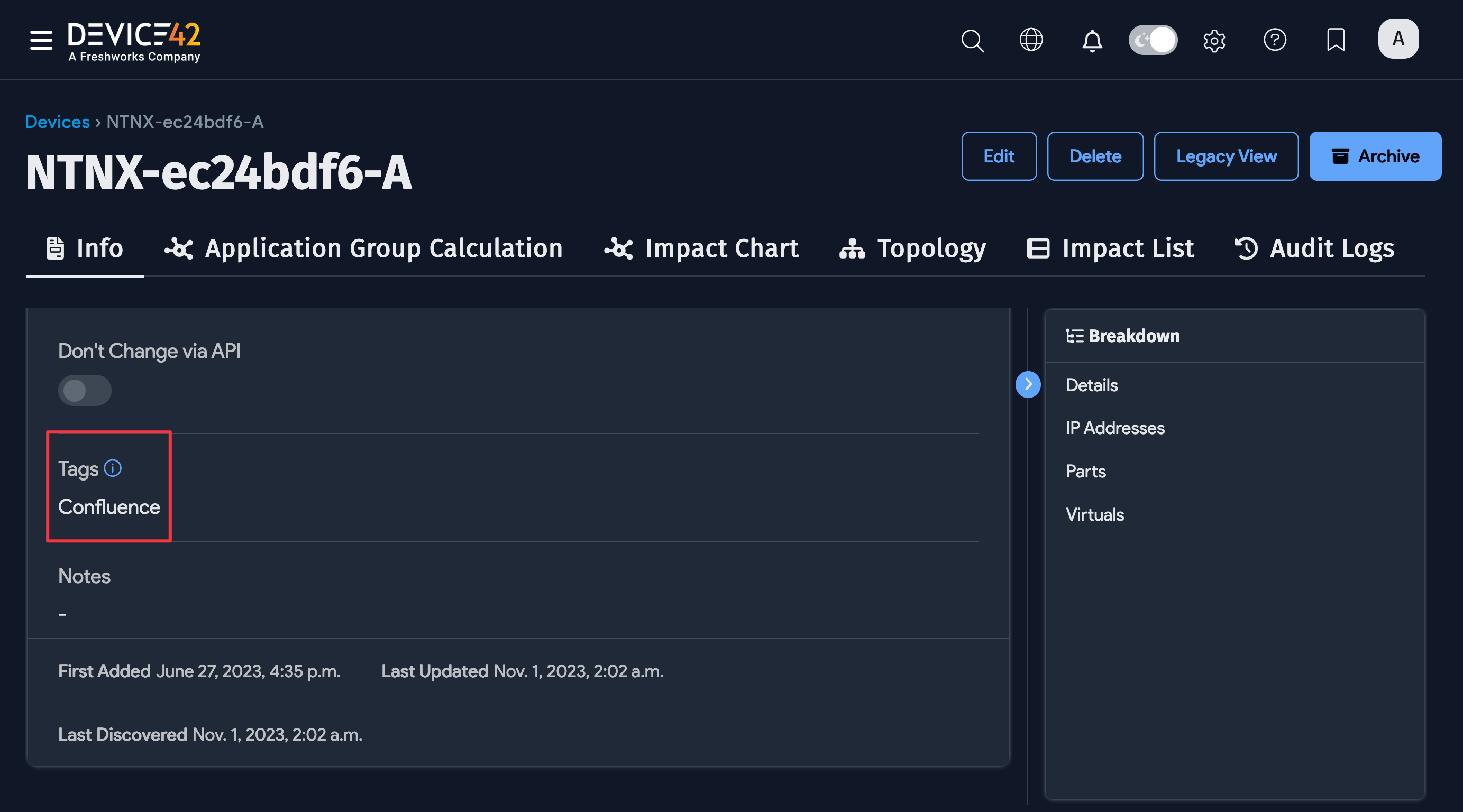
Merging Tags
Due to misspellings or duplication, you may end up with multiple similar tags. You can merge them as follows:
From the Tags list page, select two or more tags, and choose Merge selected tags from the Actions dropdown.
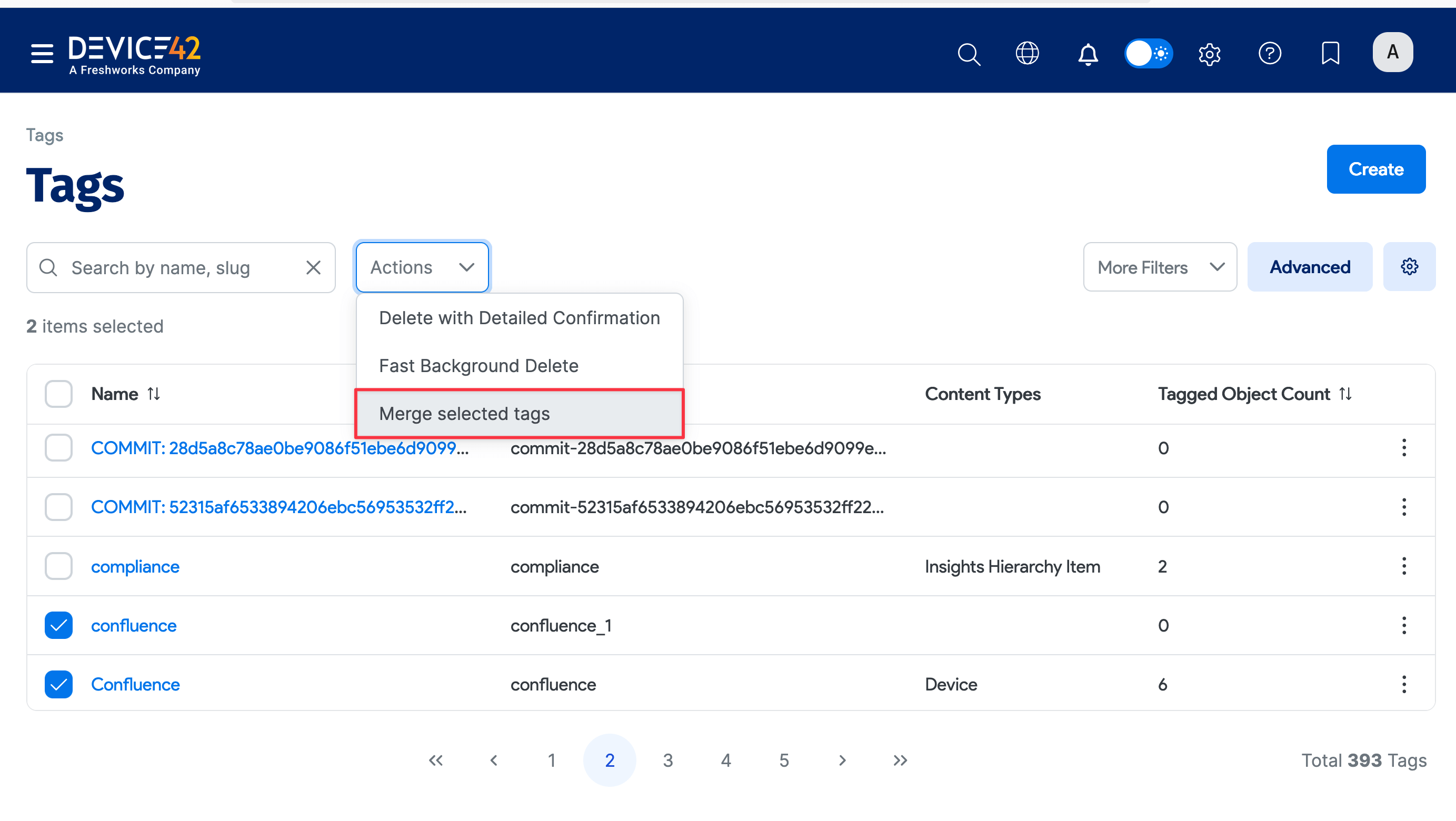

Remove Unused Tags
You can find and remove tags that are not associated with any objects.
There are several ways to find tags that aren't associated with any objects:
-
The quickest option is to click the Tagged Object Count column heading to sort the list and display tags with a zero count at the top.
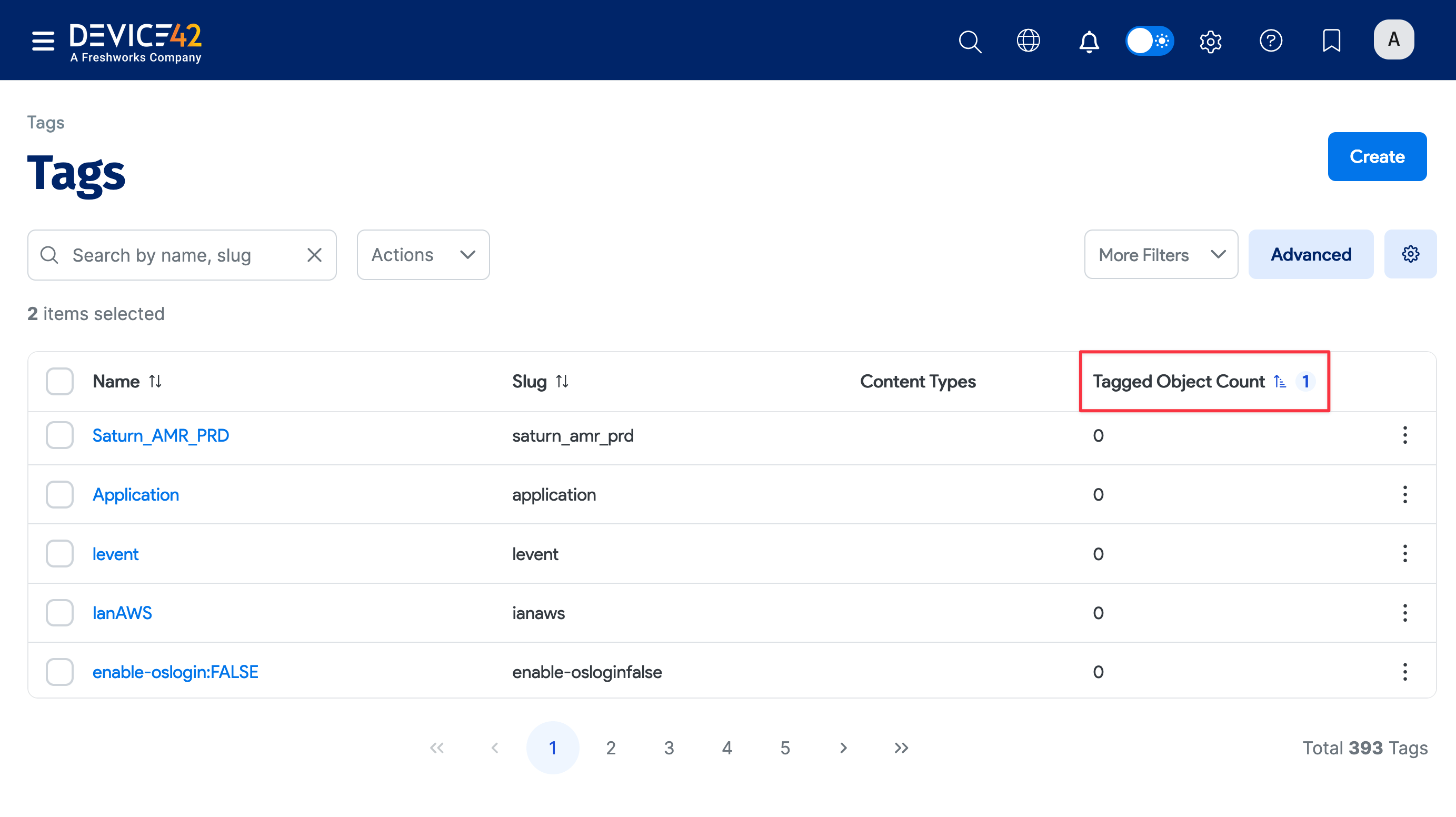

-
You can also use the basic Tagged Object Count # filter to find tags that are Equal to
0.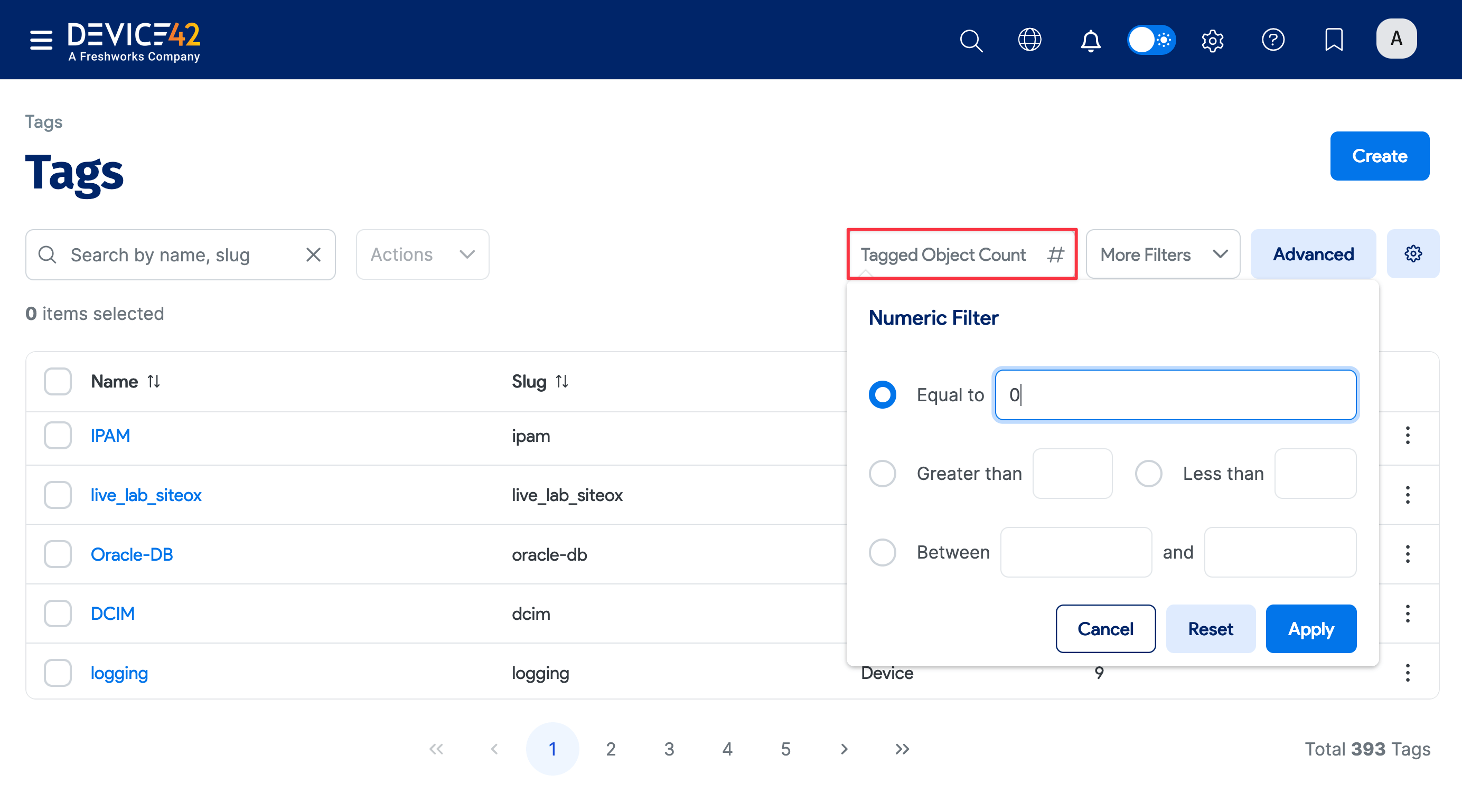
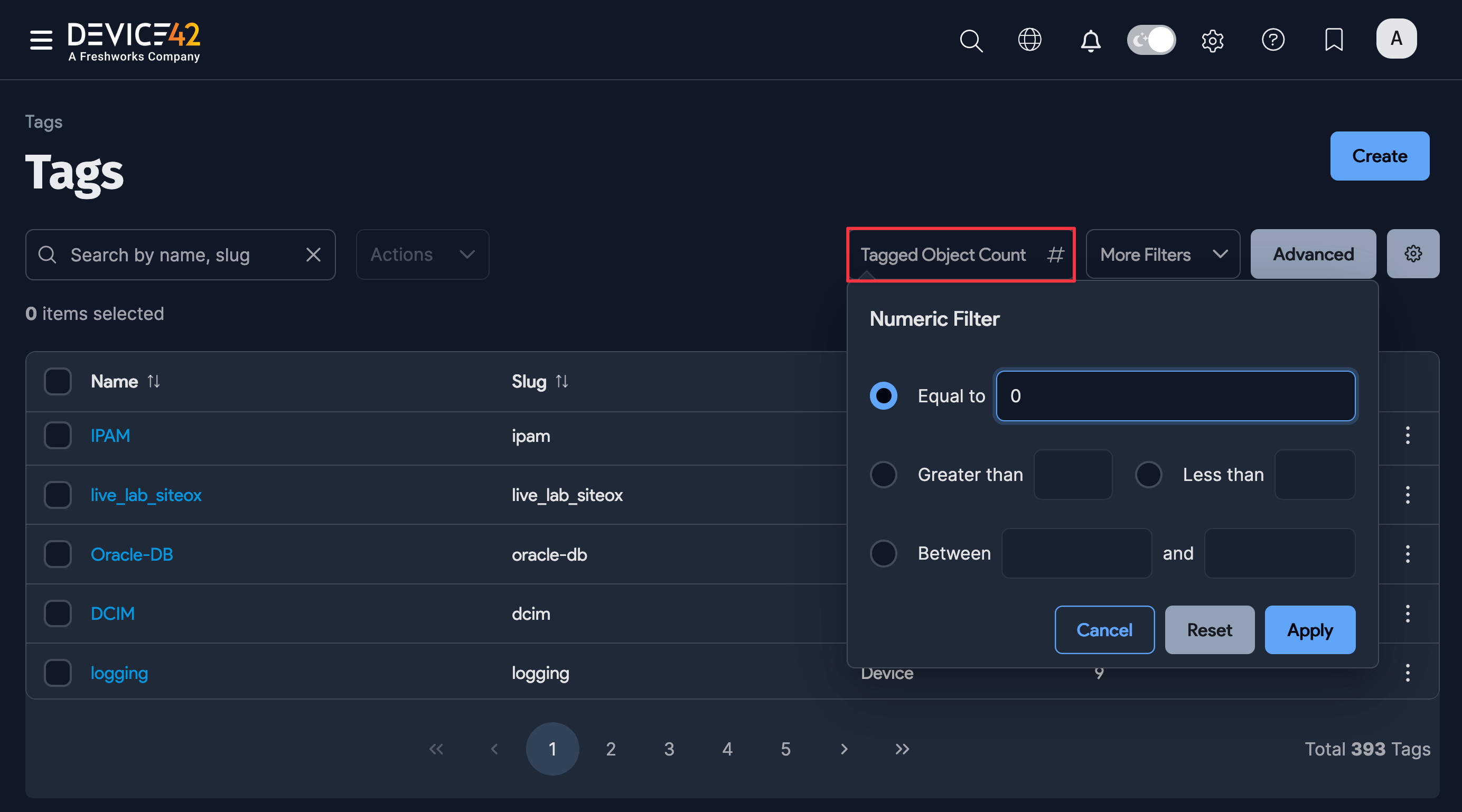
-
Another option is to use the Advanced query filter to find tags with a
tagged_object_countof0.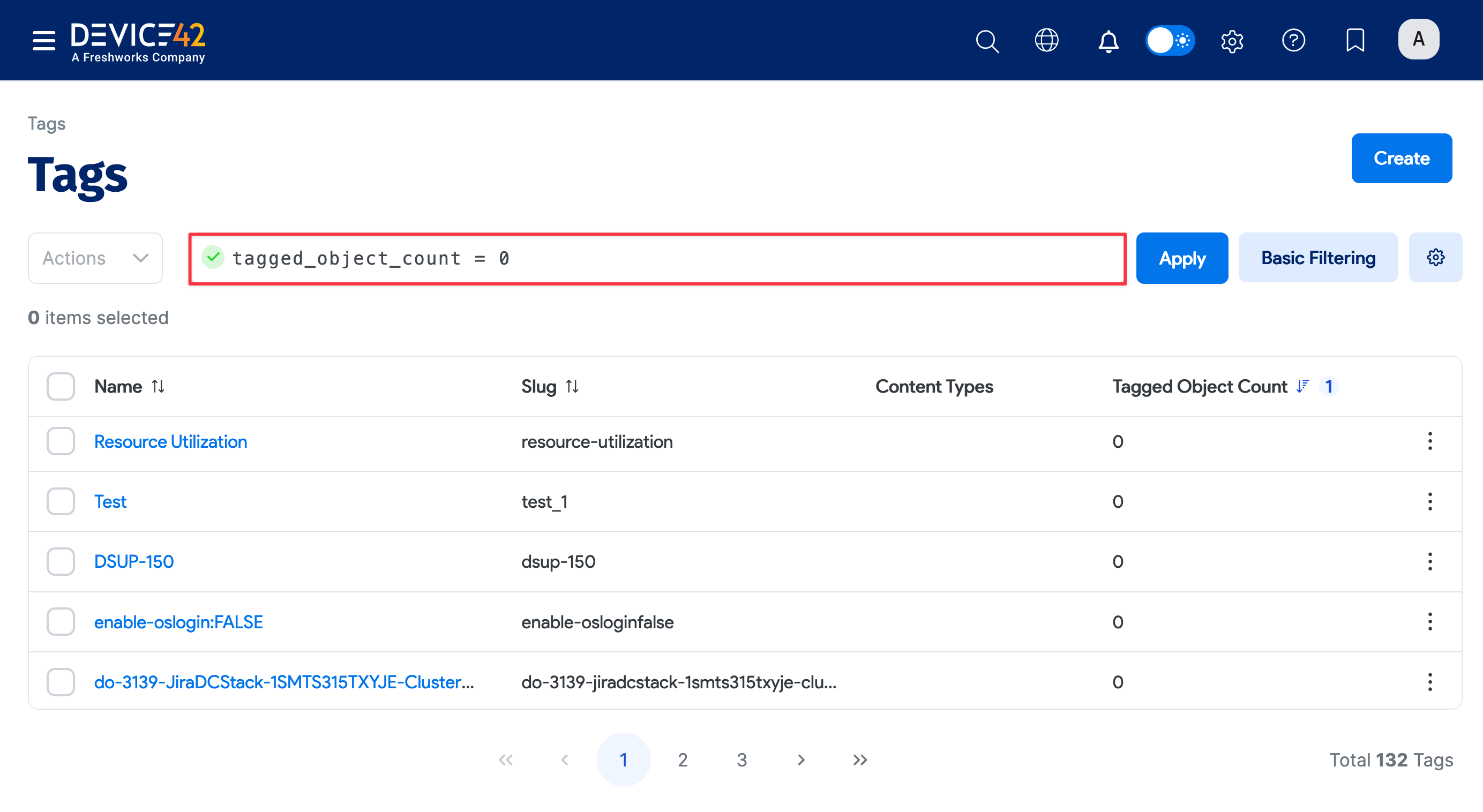
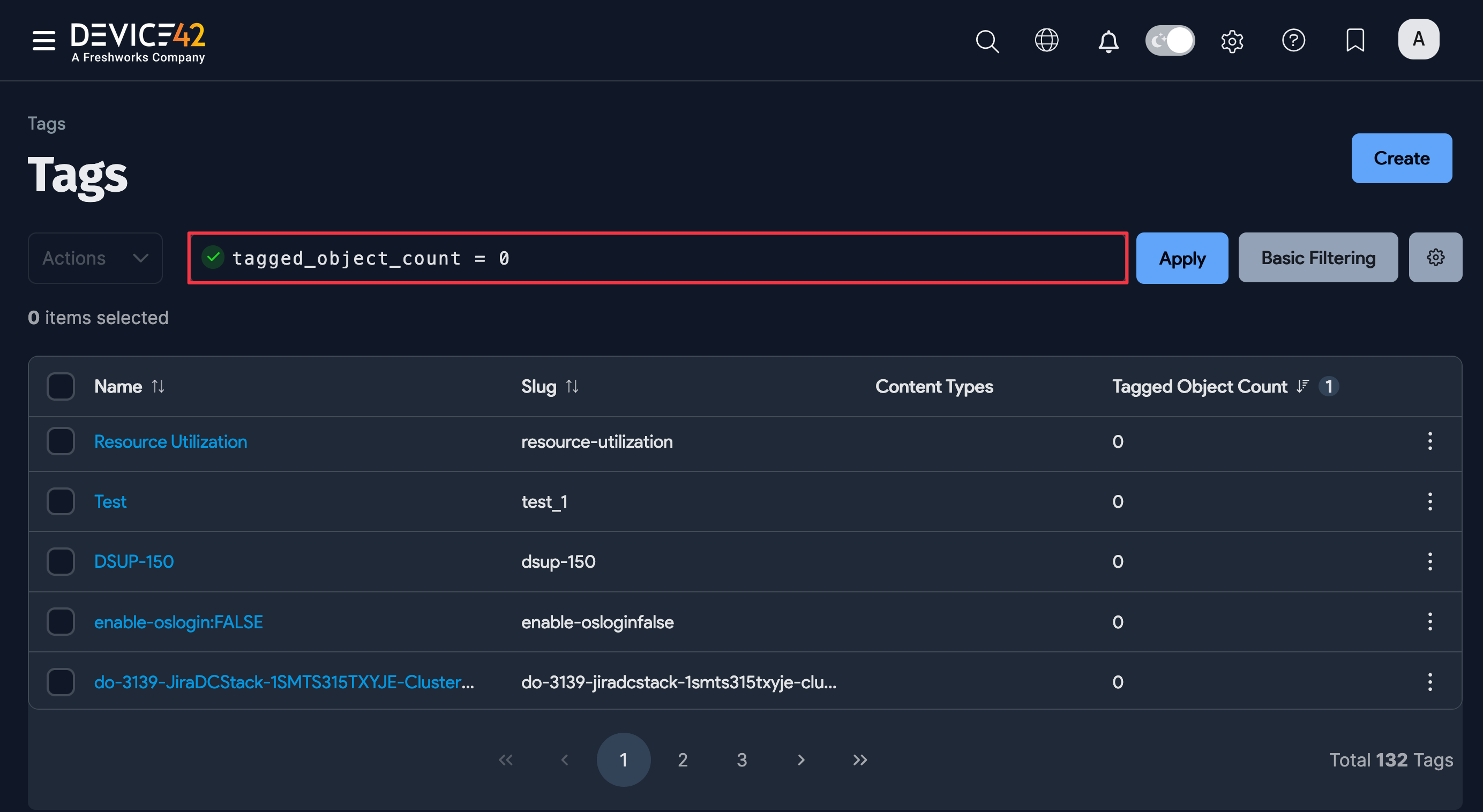
Then, select the tags with a count of 0 and choose Delete with Detailed Confirmation or Fast Background Delete from the Action dropdown.
